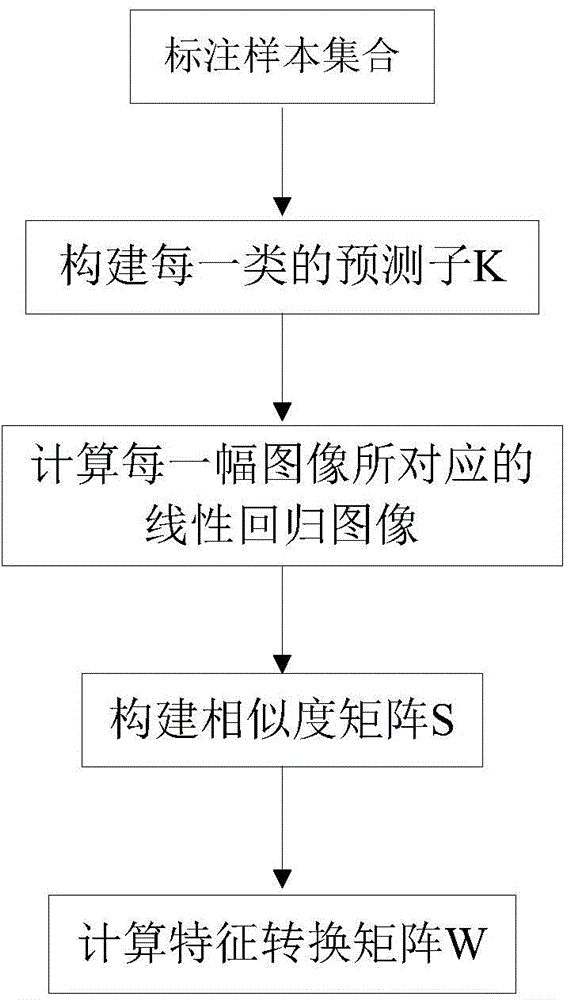Manifold-based linear regression learning method
A linear regression and learning method technology, applied in the field of manifold-based linear regression learning, can solve problems such as multicollinearity, and achieve the effect of effective identification, simple and feasible practicability
- Summary
- Abstract
- Description
- Claims
- Application Information
AI Technical Summary
Benefits of technology
Problems solved by technology
Method used
Image
Examples
Embodiment Construction
[0018] The following describes in detail a manifold-based linear regression learning method of the present invention with reference to embodiments and drawings.
[0019] The present invention proposes a manifold-based linear regression classification model. There are two main sources of ideas. One is that the linear regression model can be used to map samples of the same class to a linear subspace. This feature can be used to obtain better The classification effect, the second is that manifold learning is an important non-linear feature extraction classification technology, which can be used to map high-dimensional features to low-dimensional manifold spaces that can reveal the internal structure between data sets. Many image data sets present a nonlinear structure in the original high-dimensional space. Manifold learning can maintain the nonlinear structure in the high-dimensional space through feature mapping, and has been widely used in image analysis and pattern recognition.
...
PUM
 Login to View More
Login to View More Abstract
Description
Claims
Application Information
 Login to View More
Login to View More - R&D
- Intellectual Property
- Life Sciences
- Materials
- Tech Scout
- Unparalleled Data Quality
- Higher Quality Content
- 60% Fewer Hallucinations
Browse by: Latest US Patents, China's latest patents, Technical Efficacy Thesaurus, Application Domain, Technology Topic, Popular Technical Reports.
© 2025 PatSnap. All rights reserved.Legal|Privacy policy|Modern Slavery Act Transparency Statement|Sitemap|About US| Contact US: help@patsnap.com



